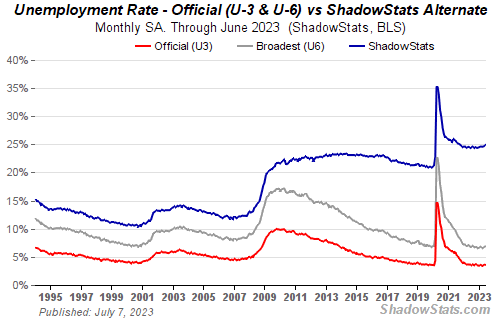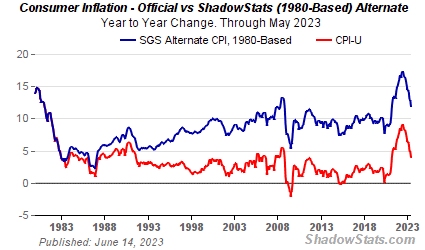Do you have the feeling that things are getting worse even though you hear on TV or read in the newspaper that economic conditions are improving? If you answered “yes” you are right to be suspicious because the economic numbers reported by the media do not reflect today’s reality. The economic statistics reported hardly ever reflect reality because they are manipulated for political means. Politicians have incentive to manipulate economic statistics because a large part of their political survival depends on how the public views the state of the economy (assuming the politicians function in a democracy). The public is likely to vote the incumbents out of office if they perceive the economy to be in bad shape and deteriorating and to reelect the incumbents to another term if they perceive the economy to be in good shape and improving. This is not a partisan issue as both Democratic administrations and Republican administrations have been guilty of manipulating economic numbers. This is not just an issue relegated to the U.S. because it also occurs in other countries like England.
Two main areas where economic data is most manipulated and underreported are unemployment and inflation.The U.S. Government began to drastically change how unemployment and inflation were measured during the Clinton Administration. A man named John Williams runs a website called “Shadow Government Statistics”, which tracks all the misreporting of economic data by the U.S. Government data over the years. Williams provides primers on how the U.S. Government has changed the way it has measured economic data over the years. You can read his work by clicking this link.
The U.S. Government talks about how the unemployment rate is still less than 10%. This statistic, however, is not a true representation of the true unemployment rate. The less than 10% figure that is frequently cited does not include a key group of people: people who haven’t been able to find a job for several months (or “discouraged workers” using the government’s euphemism). Not including discouraged workers in the regularly cited unemployment rate is a case of intellectual dishonesty by the U.S. Government because this is a large group of people as it is difficult for many people to find a job quickly. The U.S. Government also fudges the unemployment rate by using something called a “birth/death” model. The “birth/death” model uses past numbers to forecast the current level of job creation and job destruction each month. The model should be thrown out the window at a time like this because current economic conditions are nothing like they were in recent memory. Over the past few years the model has generally overstated the degree of job creation. In fact, I’ve read that the model claims that the U.S. economy has added financial and construction jobs during a time when there have been almost daily layoff announcements from these two hard hit sectors. When you take these two factors together it is clear that unemployment is grossly understated. In fact, Williams calculates that the actual unemployment rate is above 20%! The following chart illustrates how understated the unemployment rate has been through time.
By understating the unemployment rate, the government can claim they are doing a better job managing the economy than they really are and interest rates can remain artificially low as investors have a more positive opinion of the U.S. economy than what reality actually is. If investors saw the real unemployment rate reported they would demand much higher interest rates to compensate for the fact that betting money on the performance of the U.S. economy is a far riskier proposition than what they currently believe.
The most egregious act of economic statistical misrepresentation by the U.S. Government is the reporting of the Consumer Price Index (CPI), which is supposed to measure the inflation rate that consumers experience. Themethod used to calculate CPI has been altered at least three times since the George H.W. Bush Adminstration. Each alteration lowers the rate of stated inflation.
Courtesy of ShadowStats.com
To learn even more about the history of the U.S. Government manipulating economic data I high encourage you to read this article written by Kevin P. Phillips which can be found at this Link. I plan to write more about the misrepresentation economic statistics in the next blog post.




